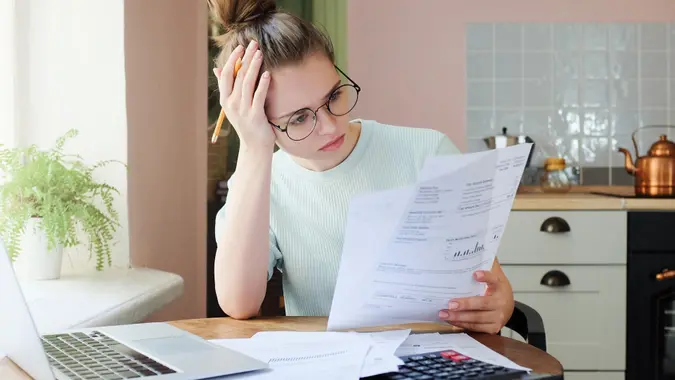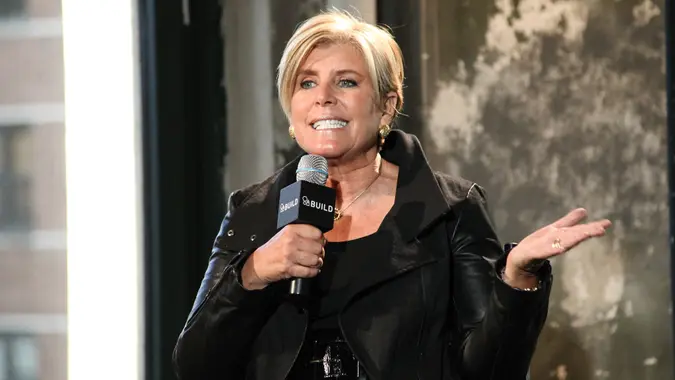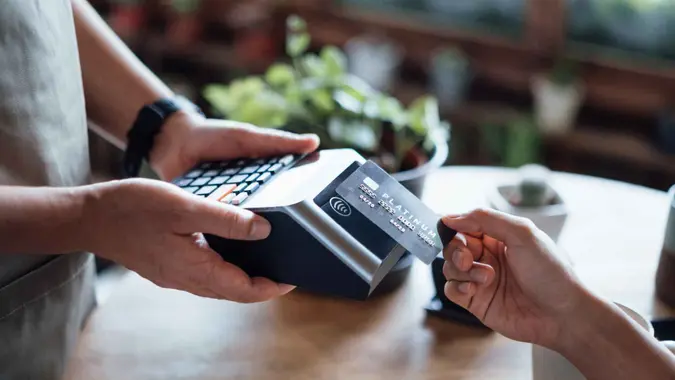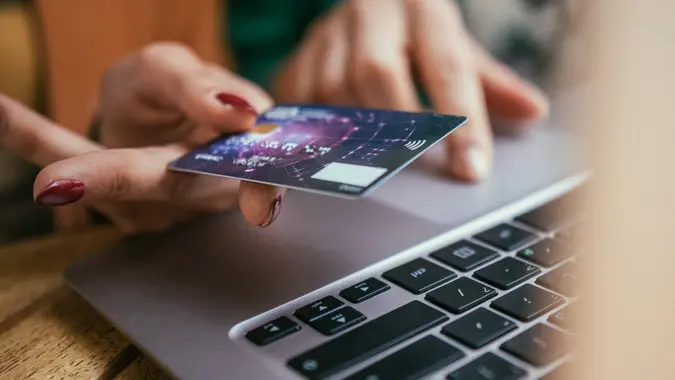What Is an Unsecured Credit Card and How Does It Work?

Commitment to Our Readers
GOBankingRates' editorial team is committed to bringing you unbiased reviews and information. We use data-driven methodologies to evaluate financial products and services - our reviews and ratings are not influenced by advertisers. You can read more about our editorial guidelines and our products and services review methodology.

20 Years
Helping You Live Richer

Reviewed
by Experts

Trusted by
Millions of Readers
An unsecured credit card is a type of card that doesn’t require a security deposit to open. It’s the most common type of credit card. But it’s typically reserved for people with established or good credit. Read on to learn more about these types of cards.
What Is an Unsecured Credit Card?
Unsecured credit cards don’t require a security deposit, or collateral, to open an account. Without collateral — such as a house, a car or cash deposit — lenders risk not getting their money back if the borrower defaults on payments.
Because unsecured debt is riskier for lenders, not everyone qualifies for unsecured credit cards. Borrowers typically need to meet the following requirements:
- Good credit
- An established credit history
- Other favorable factors such as strong household income.
Interest rates for unsecured credit cards vary depending on creditworthiness. For example, unsecured credit cards for people with fair credit scores might have APRs ranging from 10% to 15% higher than those of cards geared toward people with good credit.
How Unsecured Credit Cards Work
- Once you are approved for an unsecured credit card, you’ll receive a credit limit.
- From there, you can spend up to the limit on that credit card.
- Along the way, you’ll be expected to make minimum monthly payments.
Paying off your balance in full each month is the best way to responsibly manage an unsecured credit card.
Pros and Cons of Unsecured Credit Cards
When considering a new unsecured credit card, it helps to weigh the pros and cons.
| Pros | Cons |
|---|---|
| Helps build or improve credit | Higher interest rates |
| No security deposit required | Requires good to fair credit to apply |
| Higher credit limits | Lower credit limit |
Secured vs. Unsecured Credit Cards: Key Differences
Though unsecured credit cards are more common, a secured credit card is more accessible to borrowers with limited credit history or subprime credit.
Here are some key points to know about secured credit cards:
- Typically requires a refundable security deposit.
- This card allows you to start building credit through on-time payments.
- Credit lines can be small, such as a few hundred dollars.
The table below highlights the key differences of secured vs. unsecured cards:
| Feature | Secured credit card | Unsecured credit card |
|---|---|---|
| Deposit required | Yes | No |
| Best for | -New credit users -Bad credit borrowers |
Good credit borrowers |
| Credit limit size | Lower | Higher |
| Upgrade opportunities | Can sometimes graduate to a unsecured card | Can sometimes gain a larger credit limit |
How To Qualify for an Unsecured Credit Card
If you want to qualify for an unsecured credit card, use the following strategies:
- Build your credit score:
- Generally, unsecured credit card issuers prefer to work with borrowers who have good credit.
- Grow your income:
- A higher income can often open the door to an unsecured credit card.
- Lower your debt-to-income (DTI) ratio:
- Your DTI measures your monthly debt obligations against your income. If your DTI is too high, lenders might not work with you. Paying off some of your debts can help lower your DTI.
When To Start With a Secured Credit Card Instead
Borrowers who initially don’t qualify for unsecured credit cards can work to improve their credit score using a secured credit card.
With a secured card in your wallet, make the effort to use it responsibly. For example, sticking to on-time payments offers a way to establish creditworthiness.
Card issuers might offer an opportunity to graduate to an unsecured credit card down the line.
You might be ready to upgrade from a secured card to an unsecured card if:
- You have consistently made on-time payments.
- You are confident you won’t overspend when using the card.
- Your credit score has grown.
FAQ
Here are the answers to some of the most frequently asked questions about unsecured credit cards.- Can I upgrade from a secured card to unsecured?
- Many lenders offer an opportunity to upgrade from a secured credit card to an unsecured credit card. Generally, this opportunity becomes available after you stick with responsible management of the secured card, like on-time payments, for a while.
- Do unsecured cards have lower fees?
- Both unsecured credit cards and secured credit cards come with fees. You'll need to read the fine print before signing up for a particular credit card to ensure you are comfortable with the fees involved.
- How fast can an unsecured card build my credit?
- When it comes to credit building, nothing happens overnight. Generally, it will take months or years of responsibly managing an unsecured credit card in order for it to have a positive impact on your credit score.
Grace Lin contributed to the reporting for this article.
 Written by
Written by  Edited by
Edited by 

























